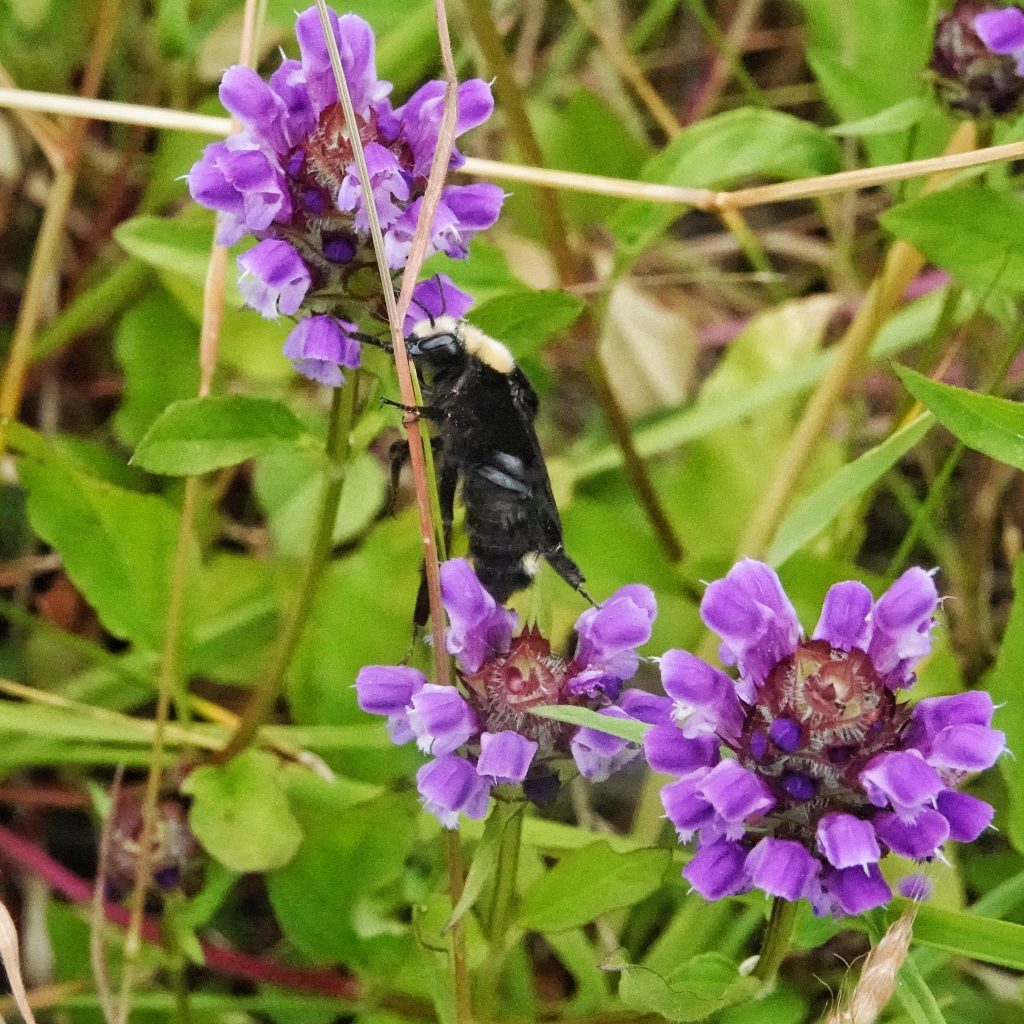
Prunella vulgaris is one of the very few plants I learned to identify from Craig Sondergaard 40+ years ago (of the hundreds he tried to teach me) that I not only always recognized through the years but even remembered what its scientific name was. The short, dense spike with its bracts so red that even my colorblind eyes see its hue, and the intricate, delicate lobed purple flowers, have always been something of a favorite of mine, although I had always just assumed, since it is found so often in weedy, disturbed ground settings, that it was not a native. And evidently some of it is not. The variation P. v. vulgaris, which has broader leaves and is often decumbent, is a European import. But the ones I found growing abundantly in the grass along the Burnt Bridge Creek trail, with erect stems and leaves only a third as wide as long, and bumble bees flocking to them, is variation P. v. lanceolata, and they are native to the PNW, as well as almost all of northern North America. These pretty little plants are in the mint family (Lamiaceae) and have the distinctive square stems of most members of that family.
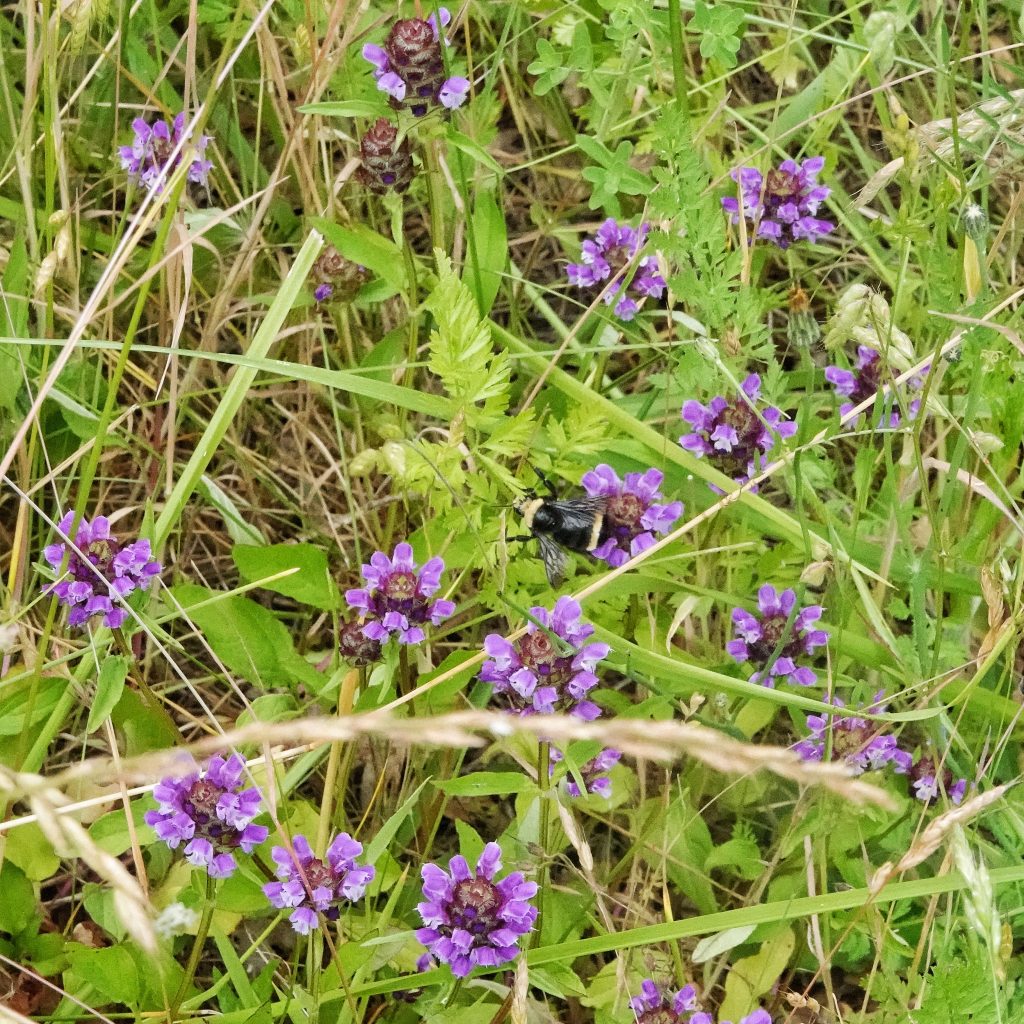
Since this plant goes by the common names self heal and heal all, it’s not surprising that it had had a variety of medicinal uses over the course of time. “Self-heal (Prunella vulgaris), although largely neglected by Western herbalists, is an important herb in Chinese medicine. The bitters have a stimulating action on the liver and gallbladder, and selfheal is prescribed for symptoms of jaundice and liver problems. It is also recommended for gout. Self-heal is used for headaches, particularly when related to tension and photophobia. Research has indicated that Prunella has a potent antiviral action, including activity against HIV (Zheng 1990, Yamasaki et al 1993). This combined with an immunomodulatory effect of the polysaccharides (Markova et al 1997) makes Prunella well worth bearing in mind when considering immunity especially since it grows as a weed in temperate climates. Rosmarinic acid contributes to antioxidant effects of Prunella (Lamaison et al 1991), whilst trials suggest it has antimutagenic effects, indicating possible use as an anticancer herb (Lee and Lin 1988). Self-heal can also be taken for swollen glands, mumps, glandular fever and mastitis. As an astringent, it can be taken for diarrhoea and colitis. [McIntyre AHTC]” Prunella vulgaris – Self-heal, which also lists a large number of other uses for Prunella vulgaris.
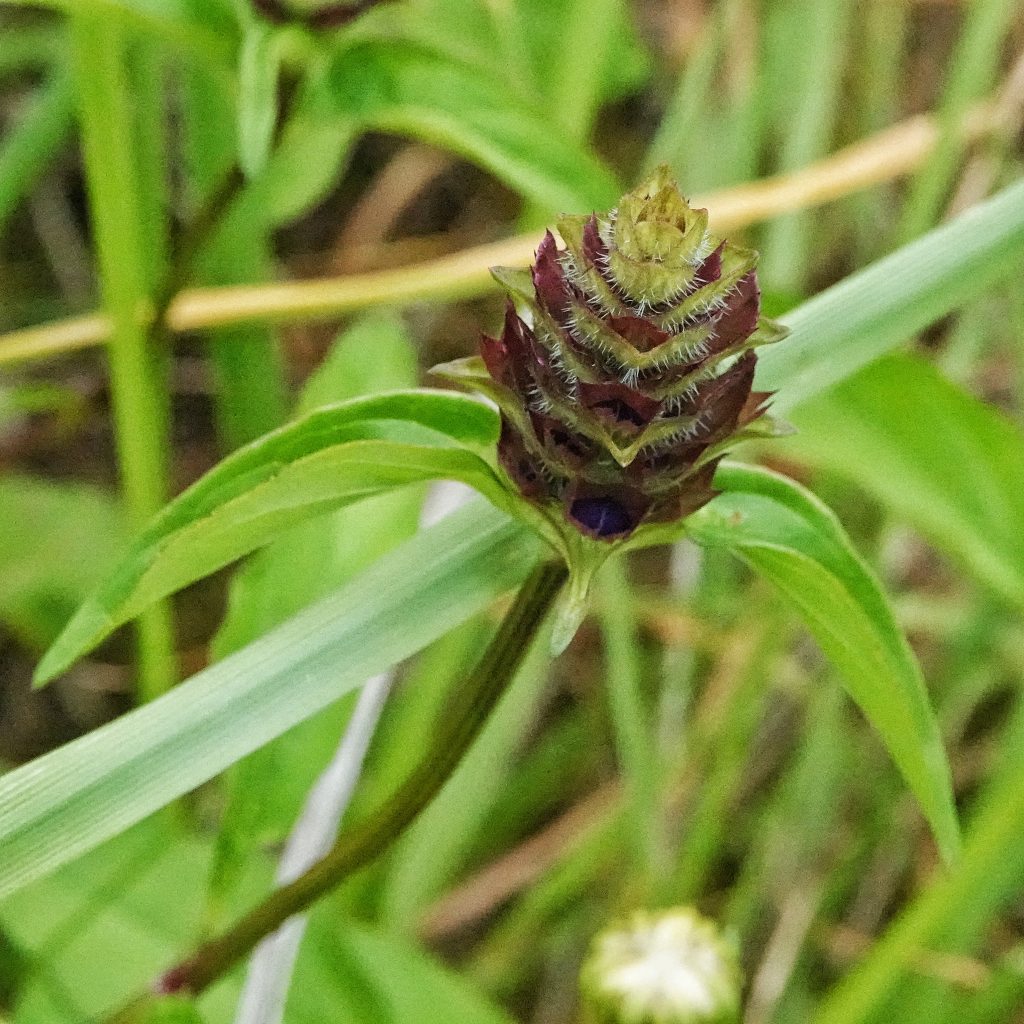
Ethnobotany– “…Plant soaked in cold water and used as one of the most common drinks…Hot or cold infusion of plant taken as a tonic for general indisposition…Leaves used for boils, cuts, bruises and skin inflammations…Compound containing root used as a female remedy…Root, sharpened the powers of observation, used to make a tea to drink before going hunting…” are just some of the 52 entries for this plant on BRIT – Native American Ethnobotany Database.
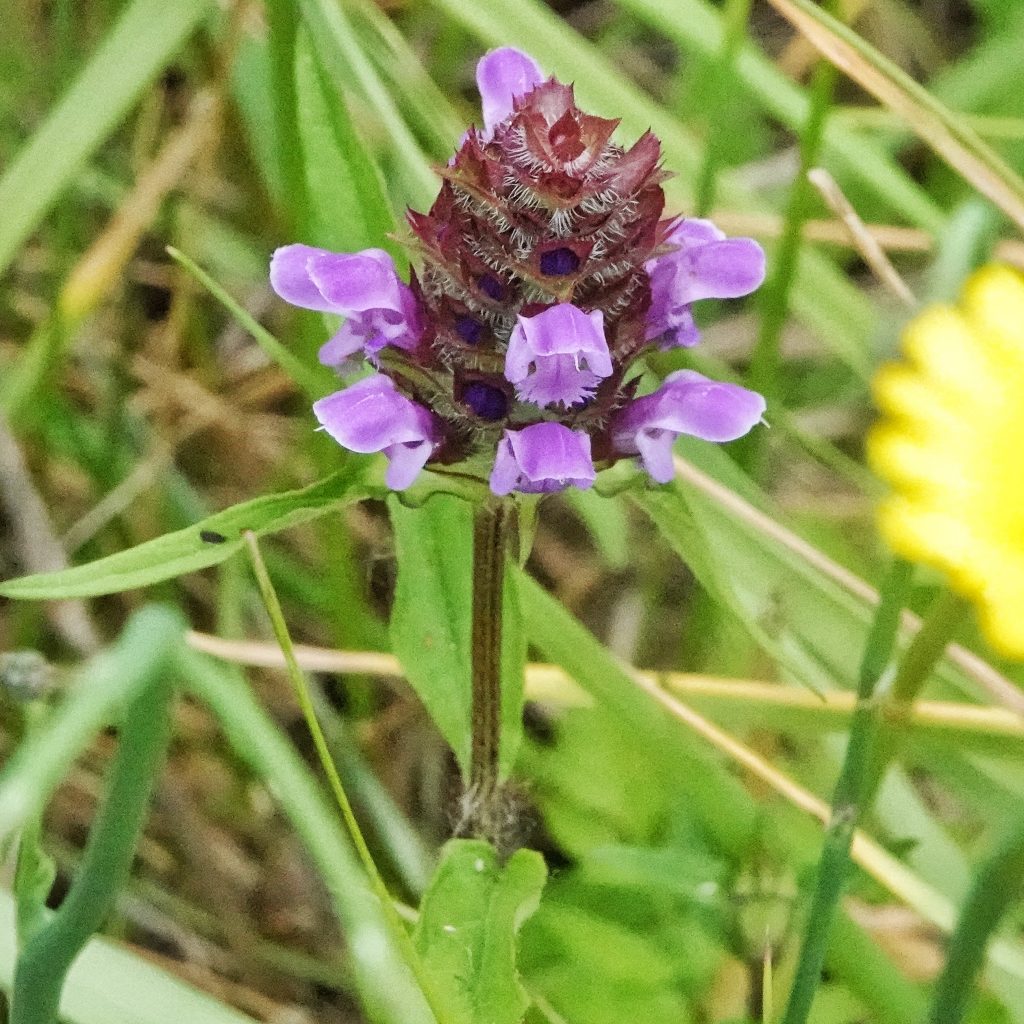
Description– “Clumps or single stem, upright to prostrate, hairy, unbranched. Leaves lance- to egg-shaped, entire or slightly toothed, opposite; lower leaves with petioles; upper leaves sessile. Flowers with short stalks in stout round head above 2 spreading, pointed bracts at stem top. Flower purple, pink, or white; upper lip hood-like; lower lip 3-lobed with middle lobe fringed.” Prunella vulgaris | Self-heal | Wildflowers of the Pacific Northwest
Similar species– To me, nothing else looks like Prunella vulgaris, and it is the only Prunella found in the US and Canada
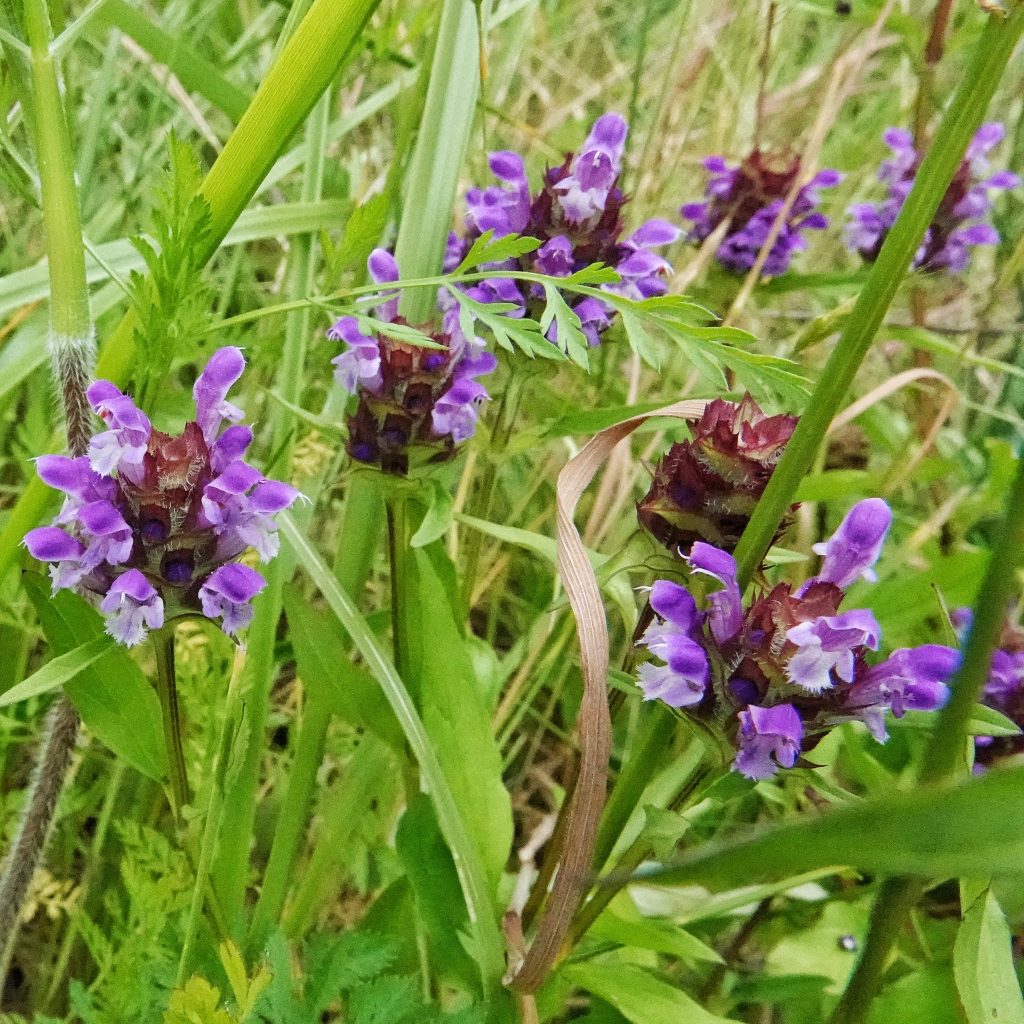
Habitat– “Mesic to dry roadsides, waste places, lawns, fields and open forests in the lowland, steppe and montane zones…” Prunella vulgaris – Self-heal
Range– “native in Europe, Asia, Africa, and North America, and is common in most temperate climates.” https://en.wikipedia.org/wiki/Prunella_vulgaris; found region wide except absent in shrub steppe.
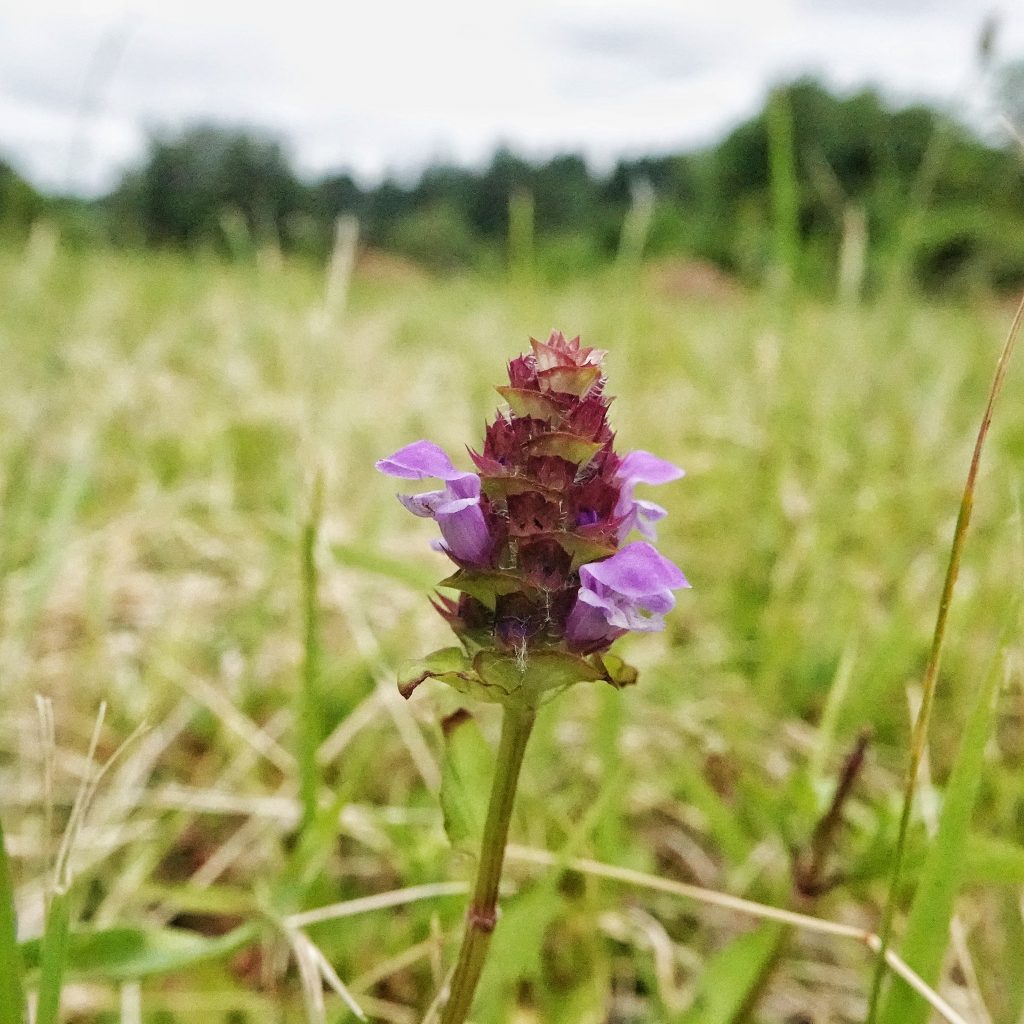
Eaten by– “Nectar: Pale Swallowtail, Clouded Sulphur, Cabbage White (fq), Margined White, Checkered White, American Lady, Mylitta Crescent (fq), Gulf Fritillary, Behren’s Silverspot (a segregate of Zerene Fritillary), Gray Hairstreak, Great Arctic, Propertius Duskywing, Northern Cloudywing, Common Checkered-Skipper, Silver-spotted Skipper, Lindsey’s Skipper (fq), Woodland Skipper, Dun Skipper (particularly fond of this source), Sandhill Skipper, Sonora Skipper, Tawny-edged Skipper, Common Roadside-Skipper.” https://www.cnps-scv.org/images/handouts/CaliforniaPlantsforLepidoptera2014.pdf; “The flowers are visited by long-tongued bees, short-tongued bees, small butterflies (primarily Whites and Sulfurs), and skippers. Bee visitors include bumblebees, Anthophorine bees, little carpenter bees (Ceratina spp.), long-horned bees (Melissodes spp.), and Halictid bees (including green metallic bees). These insects seek nectar, although the Halictid bees also collect pollen.” Self-Heal (Prunella vulgaris elongata) ; according to some gardening sites this plant is deer and rabbit resistant; some Chrysolina leaf beetles may consume this; my friend Michael Palmer found a larva of what was tentatively identified as the leaf mining fly Calycomyza menthae on this plant.
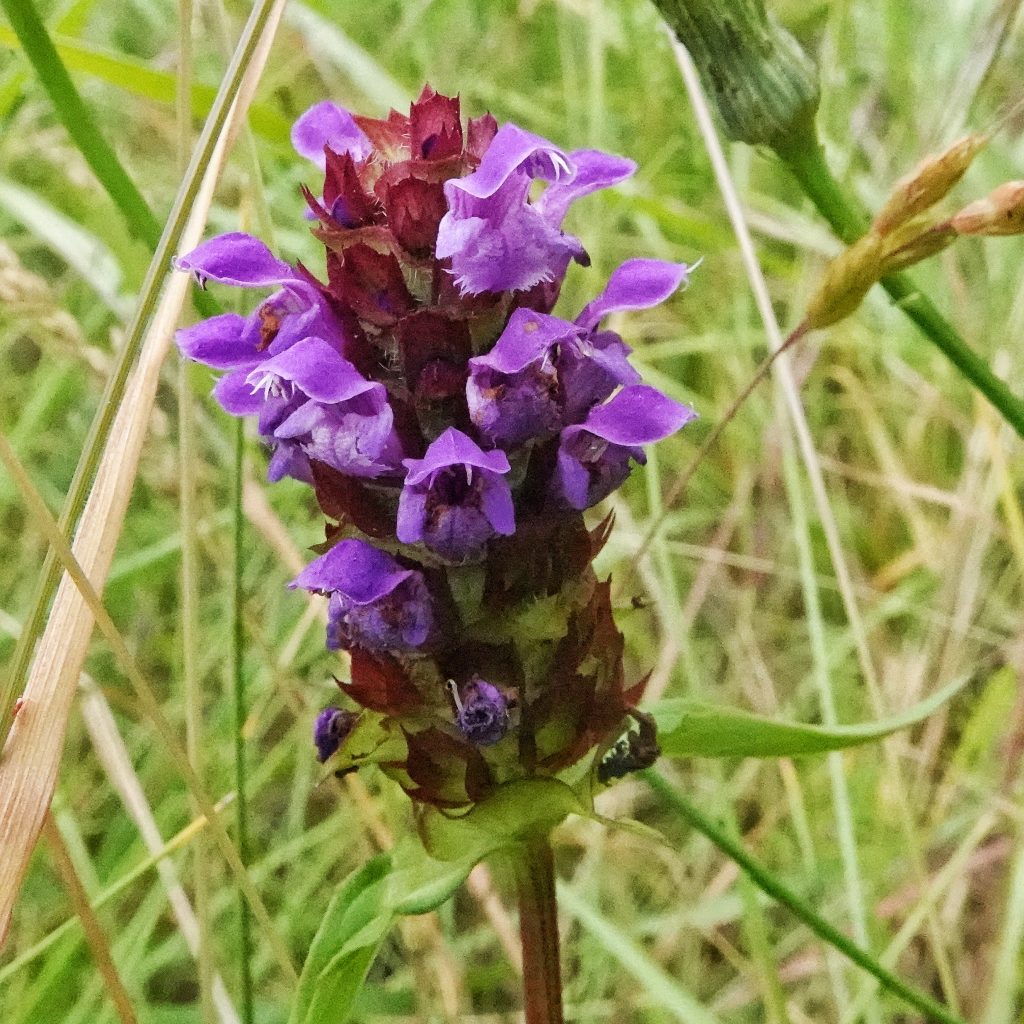
Reproductive timing– Flowers bloom from May to September
Etymology of names– Prunella “…comes from a German word for quinsy, a sickness this plant was used to treat” according to Selfheal – Prunella vulgaris | Washington College. However “Flora of the Pacific Northwest” says “…name of doubtful origin (Brunella).” The specific epithet vulgaris is from the Latin word for ‘common’, which this plant certainly is.
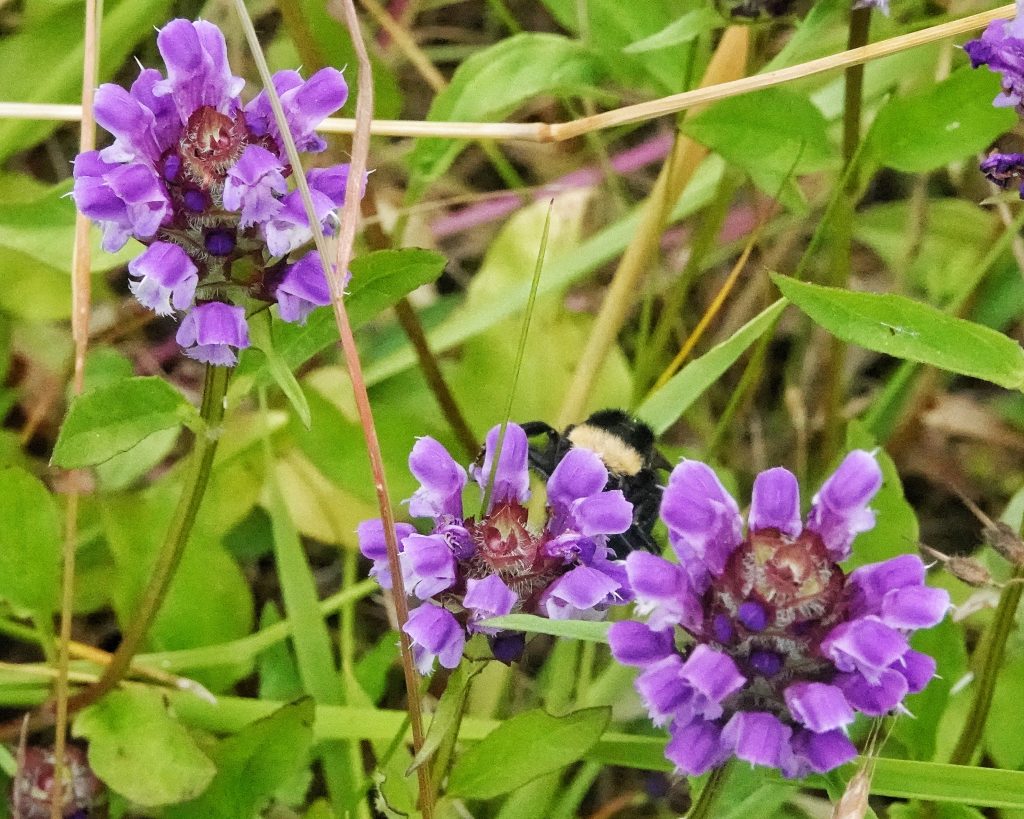
Prunella vulgaris | Self-heal | Wildflowers of the Pacific Northwest
BRIT – Native American Ethnobotany Database
Self-Heal (Prunella vulgaris elongata)
Selfheal – Prunella vulgaris | Washington College
Selfheal – A Foraging Guide to Its Food, Medicine and Other Uses
https://en.wikipedia.org/wiki/Prunella_vulgaris
https://burkeherbarium.org/imagecollection/taxon.php?Taxon=Prunella%20vulgaris
https://www.cnps-scv.org/images/handouts/CaliforniaPlantsforLepidoptera2014.pdf
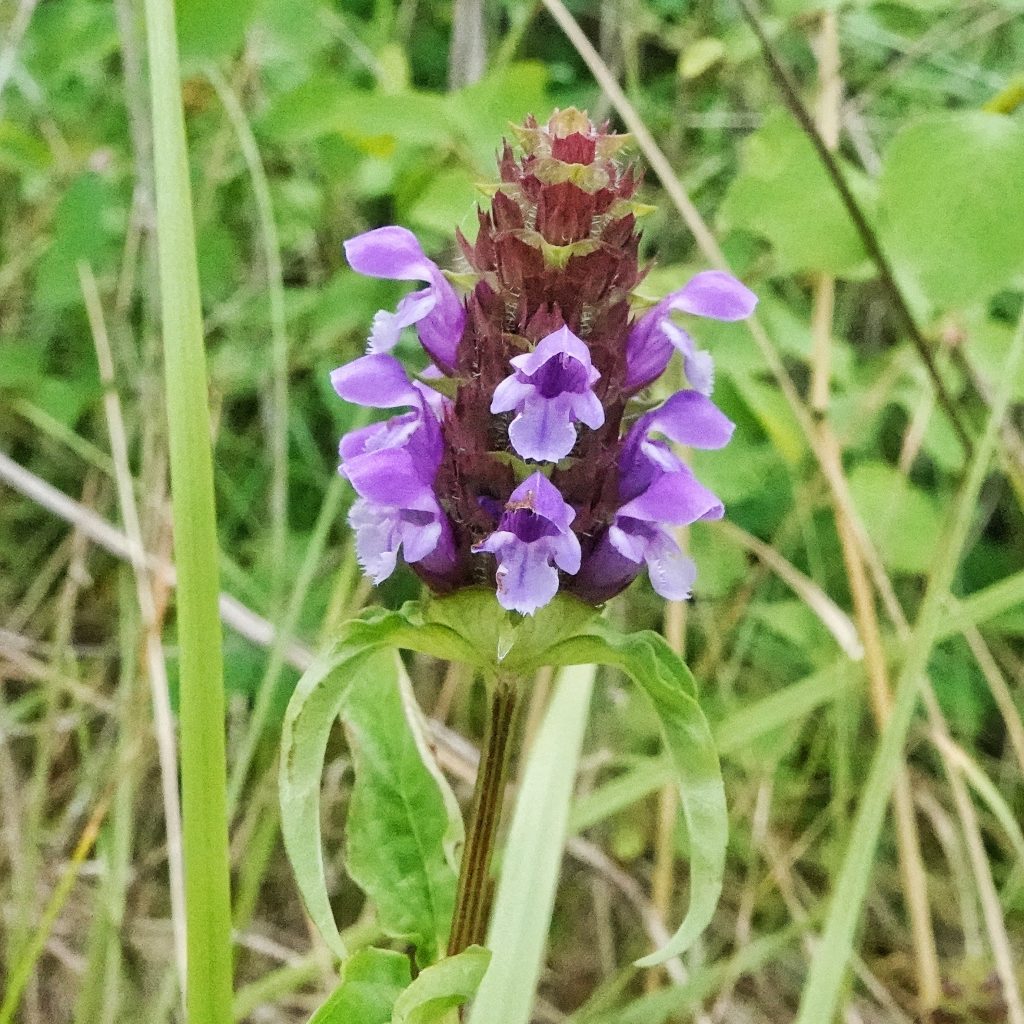
You neglected to mention that the subspecies lanceolata is truly native to the PNW. It presents itself differently from other subsp. The leaves are more lance-like, where it’s name Lanceleaf Selfheal originates. Common selfheal has slightly less lance-like foliage and the spikes are a bit difference in appearance as well. They seem less… full figured? As Lanceleaf.
You’re right, I failed to make that clear. Thanks for mentioning it, Oliver!
I added a correction.